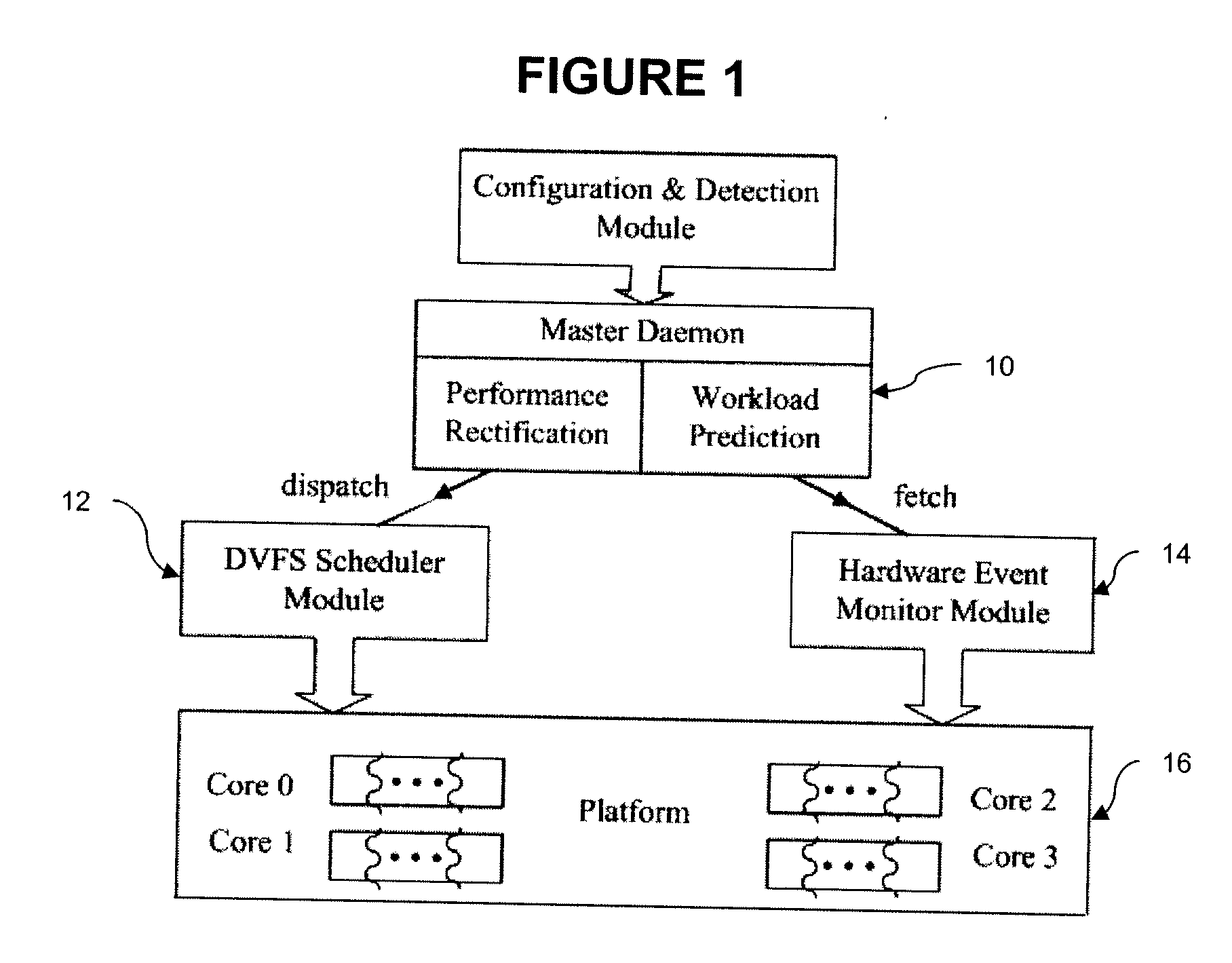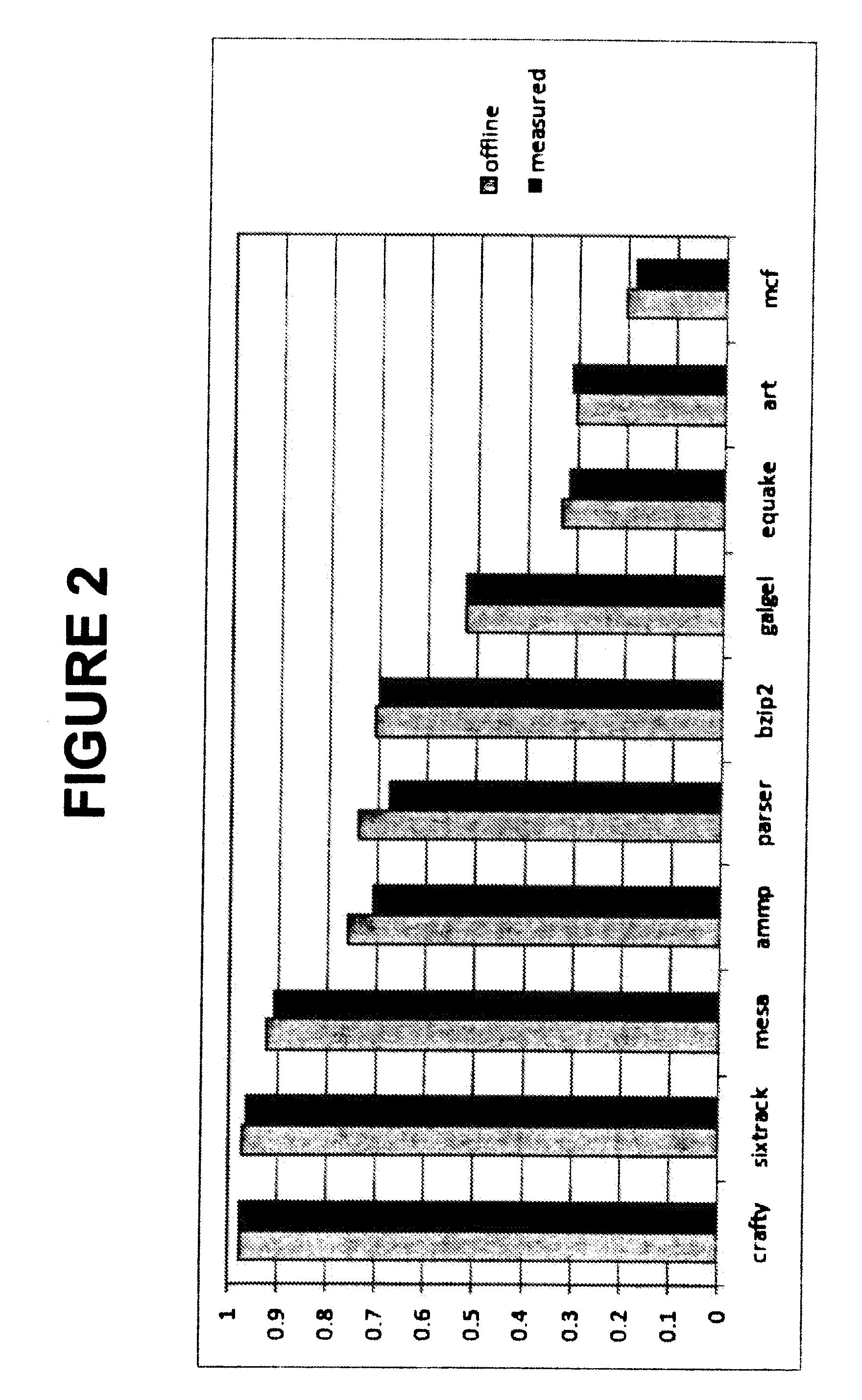Off-chip access workload characterization methodology for optimizing computing efficiency
a workload and optimization methodology, applied in climate sustainability, instruments, generating/distributing signals, etc., can solve the problems of reducing the computation time of on-chip computations with increasing processor frequency, affecting the availability and reliability of the processor, and affecting the performance of the processor, so as to reduce the power consumption of dynamic voltage and frequency scaled processors, maintain performance, and minimize energy consumption within the performance bound.
- Summary
- Abstract
- Description
- Claims
- Application Information
AI Technical Summary
Benefits of technology
Problems solved by technology
Method used
Image
Examples
Embodiment Construction
[0023]From a power-aware perspective, the behavior of an application can create opportunities for energy savings. Execution phases with memory-intensive activities have been an attractive target for DVFS algorithms because the time for a memory access is independent of how fast the processor is running. When frequent memory or input / output (I / O) accesses dominate a program's execution time, they limit how fast the program can finish executing. It is this memory wall that provides an opportunity to reduce power and energy consumption while maintaining performance. In cluster computing and grid environments, there are further opportunities for power and energy savings, particularly network or I / O operation as well as network process synchronization as well as I / O synchronization, e.g., traditional collective I / O. During the operation or synchronization, CPUs are either waiting or idling.
I—Theoretical Foundation
[0024]In Section A below, we review the theory of how to best control perfo...
PUM
 Login to View More
Login to View More Abstract
Description
Claims
Application Information
 Login to View More
Login to View More - R&D
- Intellectual Property
- Life Sciences
- Materials
- Tech Scout
- Unparalleled Data Quality
- Higher Quality Content
- 60% Fewer Hallucinations
Browse by: Latest US Patents, China's latest patents, Technical Efficacy Thesaurus, Application Domain, Technology Topic, Popular Technical Reports.
© 2025 PatSnap. All rights reserved.Legal|Privacy policy|Modern Slavery Act Transparency Statement|Sitemap|About US| Contact US: help@patsnap.com



